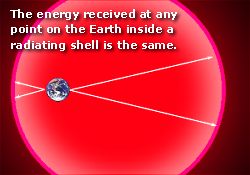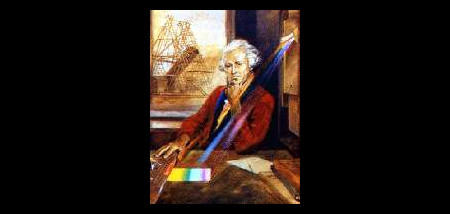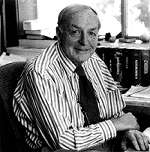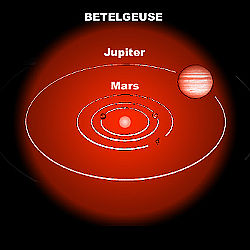holoscience.com | The ELECTRIC UNIVERSE®
A sound cosmology for the 21st century

Other stars, other worlds, other life?

 Emeritus Professor at the Australian National University, Dr. S. Ross Taylor has concluded after a lifetime’s work on the formation of the solar system:
Emeritus Professor at the Australian National University, Dr. S. Ross Taylor has concluded after a lifetime’s work on the formation of the solar system:
“When the remote chances of developing a habitable planet are added to the chances of developing both high intelligence and a technically advanced civilization, the odds of finding ‘little green men’ elsewhere in the universe decline to zero.”
The bleak suggestion that we are freaks of chance and probably all the intelligence there is in this immense universe is intuitively unsatisfactory.
The problem with all predictions about intelligent life elsewhere in the universe is that it assumes we have defied history and reached a pinnacle of understanding at the close of the 20th century. History teaches that the peak we have climbed may be atop a house of cards. We might accept Dr. Taylor’s conclusion based on the current model but it could be like pronouncing intelligent life to be highly unlikely in the ruins following the crash of a jumbo-jet. The solar system could be the result of a cosmic traffic accident. Possibly it is not the most hospitable environment for life. So using it as a benchmark must lead to pessimistic forecasts.of the solar system: “When the remote chances of developing a habitable planet are added to the chances of developing both high intelligence and a technically advanced civilization, the odds of finding ‘little green men’ elsewhere in the universe decline to zero.” The bleak suggestion that we are freaks of chance and probably all the intelligence there is in this immense universe is intuitively unsatisfactory.
Let’s examine a key assumption underlying such speculation – that we understand what constitutes a star. The first presumption appears in the following statement from the Encyclopedia Britannica: “The most basic property of stars is that their radiant energy must derive from internal sources. Given the great length of time that stars endure (some 10,000,000,000 years in the case of the Sun), it can be shown that neither chemical nor gravitational effects could possibly yield the required energies. Instead, the cause must be nuclear events wherein lighter nuclei are fused to create heavier nuclei…” Astrophysicists have never considered the simpler alternative – that stars are powered externally. All their genius has been directed at modelling how a giant ball of hydrogen could be coaxed into slowly releasing pent up atomic energy in the most difficult way imaginable – heating it to tens of millions of degrees. With one notable exception, no one has bothered to look for an alternative despite the fact that none of the observed features of the Sun have any business being there in the thermonuclear model.
The exception is the work of a remarkable engineer from Flagstaff Arizona, the late Ralph Juergens. In his model, stars simply form a positive electrode (anode) in a galactic glow discharge. The Sun and all stars are lit up by the electrical energy that shapes and flows along the arms of the galaxy. The Sun is a giant ball of lightning! This surprisingly simple model fits all of the observations about our Sun and forms one of the key ideas in the ELECTRIC UNIVERSE®. A star’s size, brightness and color are then largely determined by its electrical environment. That explains the puzzling lack of neutrinos expected from nuclear reactions in the Sun’s core, and how some stars are able to vary their output far more quickly than the thermonuclear model allows.
 Stellar lightning bolts are effective particle accelerators that can synthesize heavy elements in nuclear reactions at the surface of a star. The heavy elements seen in the Sun’s spectrum are created at the surface of the Sun, along with the few neutrinos we observe. That neutrino numbers seem to follow surface and external effects like sunspots and the solar wind is to be expected in an electric star. It is inexplicable in the thermonuclear model.
Stellar lightning bolts are effective particle accelerators that can synthesize heavy elements in nuclear reactions at the surface of a star. The heavy elements seen in the Sun’s spectrum are created at the surface of the Sun, along with the few neutrinos we observe. That neutrino numbers seem to follow surface and external effects like sunspots and the solar wind is to be expected in an electric star. It is inexplicable in the thermonuclear model.
In the last few years a new class of faint stars has been discovered. They are called L-Type Brown Dwarfs because the element lithium appears in their spectra. They are the most numerous stellar objects in the galaxy and bridge the gap between stars and Jupiter-sized planets. They are too small to be shining from internal thermonuclear power. A further puzzle is that they radiate blue and ultraviolet light even though they are cool at a temperature around 950K. Water molecules dominate their spectra.
All of these puzzles are simply explained by an electric star. There is no lower limit to the size of a body that can accept electric power from the galaxy so the temperatures of smaller dwarfs will range down to levels conducive to life. The light of a red star is due to the distended anode glow of an electrically low-stressed star. The blue and ultraviolet light come from a low-energy corona. (Our Sun’s more compact red anode glow is seen briefly as the chromosphere during total solar eclipses. And the Sun is electrically stressed to the extent that bright anode “tufting” covers its surface with granulations and the corona emits higher energy ultraviolet light and x-rays as relativistic electrons strike it).
 At the other extremity of size, Red Giants are a more visible and scaled-up example of what an L-type Brown Dwarf star might look like close-up. The Red Giant Betelgeuse is so huge that if it were to replace our Sun then Mercury, Venus, Earth, Mars and Jupiter would be engulfed by it. Astronomers recognize that such stars could swallow planets yet their plasma envelope is so tenuous that it would not impede the planetary orbits within the star’s atmosphere. However, astronomers believe that any planet it swallowed would be gradually vaporized by intense heat from the star’s core. But the standard stellar model has to be seriously fudged to explain Red Giants, their central temperature turns out to be so low that no known nuclear process can possibly supply the observed energy output. The electric model, on the other hand, works seamlessly from Supergiant star to a planet-sized Brown Dwarf.
At the other extremity of size, Red Giants are a more visible and scaled-up example of what an L-type Brown Dwarf star might look like close-up. The Red Giant Betelgeuse is so huge that if it were to replace our Sun then Mercury, Venus, Earth, Mars and Jupiter would be engulfed by it. Astronomers recognize that such stars could swallow planets yet their plasma envelope is so tenuous that it would not impede the planetary orbits within the star’s atmosphere. However, astronomers believe that any planet it swallowed would be gradually vaporized by intense heat from the star’s core. But the standard stellar model has to be seriously fudged to explain Red Giants, their central temperature turns out to be so low that no known nuclear process can possibly supply the observed energy output. The electric model, on the other hand, works seamlessly from Supergiant star to a planet-sized Brown Dwarf.
Since an electric star is heated externally a planet need not be destroyed by orbiting beneath its anode glow. In fact life is not only possible inside the glow of a small brown dwarf, it seems far more likely than on a planet orbiting outside a star! This is because the radiant energy arriving on a planet orbiting inside a glowing sphere is evenly distributed over the entire surface of the planet.
 There are no seasons, no tropics and no ice-caps. A planet does not have to rotate, its axis can point in any direction and its orbit can be eccentric. The radiant energy received by the planet will be strongest at the blue and red ends of the spectrum. Photosynthesis relies on red light. Sky light would be a pale purple (the classical “purple dawn of creation”). L-type Brown Dwarfs have water as a dominant molecule in their spectra, along with many other biologically important molecules and elements. Its “children” would accumulate atmospheres and water would mist down. It is therefore of particular interest that most of the extra-solar planets discovered are gas giants, several times the size of Jupiter, orbiting their star extremely closely. It is our system of distantly orbiting planets that seems the odd one out. In fact it argues in favor of a galactic traffic accident between the Sun and a sub-Brown Dwarf like Jupiter or Saturn.
There are no seasons, no tropics and no ice-caps. A planet does not have to rotate, its axis can point in any direction and its orbit can be eccentric. The radiant energy received by the planet will be strongest at the blue and red ends of the spectrum. Photosynthesis relies on red light. Sky light would be a pale purple (the classical “purple dawn of creation”). L-type Brown Dwarfs have water as a dominant molecule in their spectra, along with many other biologically important molecules and elements. Its “children” would accumulate atmospheres and water would mist down. It is therefore of particular interest that most of the extra-solar planets discovered are gas giants, several times the size of Jupiter, orbiting their star extremely closely. It is our system of distantly orbiting planets that seems the odd one out. In fact it argues in favor of a galactic traffic accident between the Sun and a sub-Brown Dwarf like Jupiter or Saturn.
So let’s examine a second major plank of standard theory – that we understand where planets come from. The nebula theory of the origin of planets is so problematic that it only survives because no one has been able to come up with a better idea. A many-body system controlled by a single force, gravity, is inherently unstable and should fly to pieces. In an ELECTRIC UNIVERSE® the model is simple. Planets are “born” from stars in a descending hierarchy of size by the highly efficient expedient of electrical splitting of an unstable positively charged core. That is why the majority of stars have partners. It explains why many of the extra-solar planets orbit their star extremely closely – that is where they were created. It is why Jupiter and Saturn have a large number of close-orbiting moons. Close orbits are normal. Distant or highly eccentric orbits are more likely to be a result of capture. An exchange between orbital and electrical energy quickly stabilizes orbits.
It can be seen that the ELECTRIC UNIVERSE® model provides a superior environment for the establishment of life than a planet relying on a distant star and having to be self-sufficient for its atmosphere and surface deposits. Such a planet needs to rotate fairly quickly to even out the energy received and must have a small axial tilt for the same reason. It has only a limited range of orbits and eccentricity for life to survive. It also requires that the star maintains a steady radiance over millions of years. This is the Earth’s present situation and I believe Prof. Taylor is right in considering the chances for life to have begun and to have survived here are close to zero.
If the following sounds like science fiction, so be it. Science fiction writers are far better than experts at predicting future knowledge. What then might be the Earth’s history? The distant orbits from the Sun suggest that we were captured along with our Brown Dwarf parent. In the process, the electric power that drove our parent star was usurped by the Sun. As well as turning out the primordial light, the Sun stripped the Earth from its mother’s womb along with the Moon. Night fell for the first time and stars appeared. Ice ages began suddenly. The polar caps formed. High latitudes became uninhabitable. It is worth adding that many of the moons, or remaining offspring, of the gas giants have surprisingly icy surfaces and some have atmospheres. Life may have existed once on Mars and some of those moons.
The ELECTRIC UNIVERSE® model has almost biological overtones that favor life. In the process of growing in a galactic electromagnetic pinch, stars are prevented from becoming too massive by “budding off” other stars and gas giant planets. Some progeny remain to form binary or multiple star families. Others escape from their parent. All receive their share of energy from the galaxy. The most common stars in the galaxy are also the dimmest, the L-Type Brown Dwarfs. These stars have the “food” required for life present in their atmospheres. Such a dwarf star/gas giant may undergo a nova outburst to eject part of its core to form dense Earth-like planets and moons. If they remain close to the parent they may be enveloped within the “womb” of the stellar anode glow where it seems the principal conditions for life are present. Our search for intelligent life should therefore focus on the faintest close stars in the sky. But there is a problem in relying on radio signals because they cannot pass through the hot plasma of an anode glow. (That could account for the lack of success of SETI so far). It would limit the ability of intelligent creatures living in that environment to know anything about the wider universe since they would not see stars. There would be no incentive for space travel which, in any case, might be a problem through the anode glow region. Maybe we on Earth are almost a “one off”, as Dr. Taylor says, to have survived an escape from our stellar cocoon to see the wider universe. If so, I hope we learn to use our privileged position wisely.
The most disturbing idea I have left to last: the words used by ancient civilizations that are interpreted today as “the Sun” – like the Egyptian “Ra”, the Greek “Helios”, and the Roman “Sol” – all originally referred to the gas giant Saturn! Was that planet our primordial parent? Was Saturn until recently a much larger brown dwarf? (The apparent size and color of an electric star is an electrical phenomenon. If Jupiter’s magnetosphere were lit up it would appear the size of the full Moon). Was ancient man around to see it as a sun? If not, why would anyone call a faint yellowish speck in the night sky – the Sun? Just how recently did Saturn get its icy ring? Does the discovery that the human race seems to have spread from a handful of survivors in the not so distant past have anything to do with this story? Oddly enough, an interdisciplinary approach can answer many of these questions in surprising detail. But it requires letting go of a lot of “things we know ain’t so”.
The present model of isolated self-powered stars with a family of relatively distant planets gives infinitesimally small windows of opportunity for life to gain a foothold, let alone sustain it for millions of years. An ELECTRIC UNIVERSE® where energy is available to objects throughout the entire volume of a galaxy is an infinitely better environment for life. Faint, dwarf electric stars may be crucial to a radical reassessment of the likelihood of other intelligent life in the universe. Who knows, the Cassini mission to Saturn may be a kind of homecoming? It will return some surprises.
“Meanwhile, following the ages-old tradition of commemorating the Earth’s lucky escape from doom in a cosmic accident and its first new year in the solar system – I wish you all a HAPPY SATURNALIA!”
Image Credit: Dr. S. Ross Taylor – Photo by Darren Boyd.